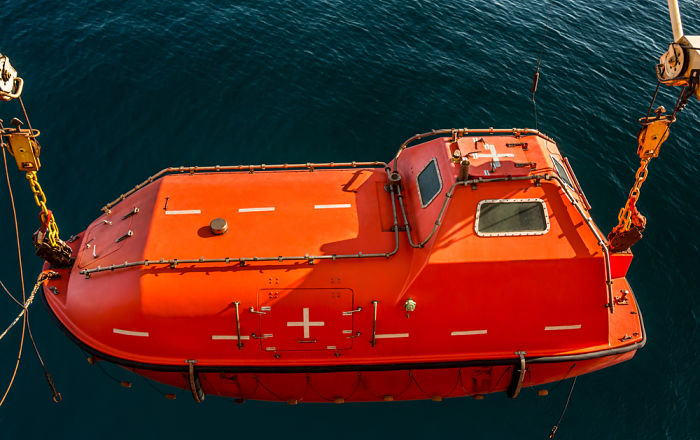Difference between lifeboats and rescue boats
Lifeboats and rescue boats are two crucial types of vessels in ensuring maritime safety. While both are used in emergency situations, each type of boat serves a distinct role. In this article, we will explore the differences between these two types of boats in detail.

Difference between lifeboats and rescue boats
Different concepts of lifeboat and rescue boat?
What is a lifeboat?
A lifeboat is one of the most vital lifesaving devices on a ship, used in emergencies to evacuate passengers when accidents occur. Lifeboats are securely fixed to the ship using davits, allowing for a swift launch.

Lifeboat
There are three types of lifeboats used on sea vessels:
- Open lifeboat: This type is less common and is used when the ship experiences engine failures or requires a rapid evacuation.
- Enclosed lifeboat: In the case of storms or severe weather conditions, enclosed lifeboats are employed to protect passengers from strong winds, seawater, and rain. These boats can remain upright even in adverse weather.
- Free-fall lifeboat: Typically used on vessels like cargo ships and oil tankers, free-fall lifeboats provide a means of escape.
What is a rescue boat?
A rescue boat is a type of vessel designed to assist in search and rescue operations and the evacuation of individuals in emergency situations. Rescue boats serve various purposes, including search and rescue, urgent medical transport and sometimes even military operations.

Rescue boat
Difference between lifeboats and rescue boats
| Lifeboats | Rescue boats | |
| Uses | Specifically designed for evacuating people from a ship in distress and serving as a survival means once abandoned ship, launched quickly from the ship’s davits. | Used for search and rescue activities at sea and often launched from the shore or a larger vessel. |
| Capacity | Up to 100 individuals | At least 4 people |
| Structure | Hard-hull, not inflatable, made from approved materials with fire-resistant properties | Can be either hard-hull or inflatable, or a combination of both |
| Size and Design | Larger and more robust than rescue boats, designed to carry more people and withstand harsh weather conditions. Equipped with essential supplies for long-term survival, such as food, water, and first aid kits. | Smaller than lifeboats and lack the space or provisions for extended survival. |
| Moving speed | Typically move at a slow pace to ensure safety during rescue and evacuation. | Often designed for fast response and rapid arrival at the scene of a rescue. |
| Operators | Typically operated by crew members of the vessel in emergency situations. | Operated by professional rescue experts who undergo specialized training. |
In conclusion, the difference between lifeboats and rescue boats extends beyond their names, encompassing crucial distinctions in roles and intended uses. Understanding these distinctions can facilitate a swift and effective response in emergency situations, ensuring safety and efficiency in rescue and evacuation operations at sea.

